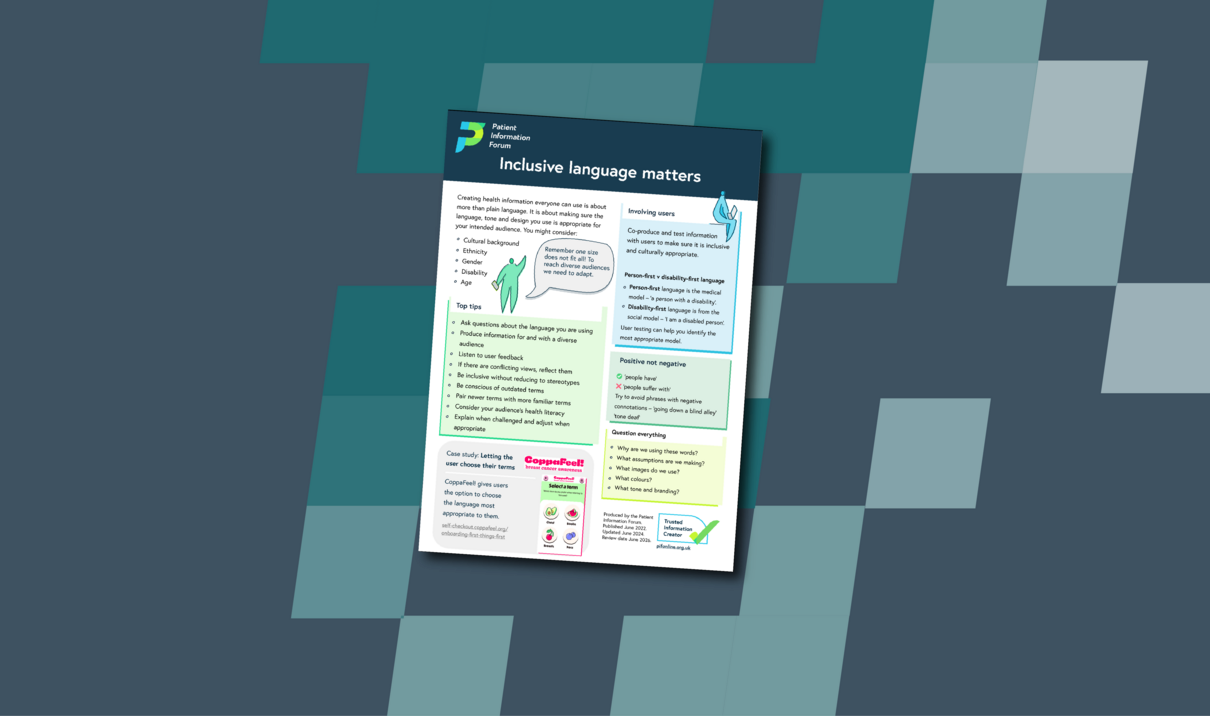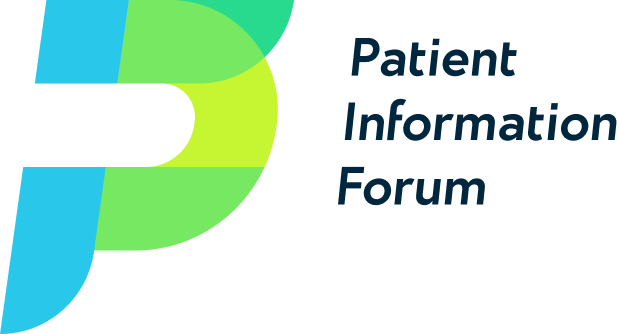
Inclusive language matters
Creating health information everyone can use is about more than plain language. It is about making sure the language and tone you use is appropriate for your intended audience. This might be due to:
- Cultural background
- Ethnicity
- Gender
- Disability
- Age
Remember one size does not fit all! To reach diverse audiences we need to adapt.
Involving users
Co-produce and test information with users to make sure it is inclusive and culturally appropriate.
Person-first v disability-first language
- Person-first language is the medical model – ‘a person with a disability’.
- Disability-first language is from the social model – ‘I am a disabled person’.
User testing can help you identify the most appropriate model.
Positive not negative
✅ ‘people have’
❌ ‘people suffer with’
Try to avoid phrases with negative connotations – ‘going down a blind alley’ ‘tone deaf’.
Question Everything
- Why are we using these words?
- What assumptions are we making?
- What images do we use?
- What colours?
- What tone and branding?
Top tips
- Ask questions about the language you are using
- Produce information for and with a diverse audience
- Listen to user feedback
- If there are conflicting views, reflect them
- Be inclusive without reducing to stereotypes
- Be conscious of outdated terms
- Pair newer terms with more familiar terms
- Consider your audience's health literacy
- Explain when challenged and adjust when appropriate
Case study: Letting the user choose their terms
CoppaFeel! gives users the option to choose the language most appropriate to them.
self-checkout.coppafeel.org/onboarding-welcome
Produced by the Patient Information Forum. Published June 2022. Updated June 2024. Review date June 2026.

Inclusive language matters
Inclusive language matters

